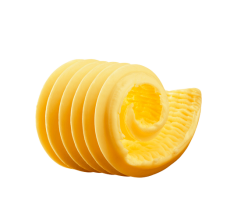Welcome to Emil Reimann

Dresden Stollen ‘Edition Frauenkirche’ is a classic among Christmas stollen.
Exquisite ingredients such as branded butter, fresh milk, sultanas, pickled almonds and the best spices form the basis of our Dresden Christmas Stollen. The gentle treatment of the ingredients for this special Christmas stollen, and in particular the specially coordinated maturing time of the stollen dough in conjunction with the temperature in the ovens, ensure optimum baking quality.
In order to preserve the flavour and freshness, the Christmas Stollen is extra-buttered after baking.
Our Dresdner Stollen with the image of the Dresden Frauenkirche is a special premium Christmas stollen and comes with an extra bag of decorating sugar.
Indispensable at Christmas time: Dresden Christmas Stollen from Emil Reimann.
The history of the Stollen
It was the butter that made the Christmas stollen tasty

The history of Dresden Christmas Stollen dates back to the 15th century. The Christstollen was first mentioned in a document in 1474.
At that time, the stollen was a simple baked good, also known as Striezel or Strutzel, and was only permitted as a fasting food in the pre-Christmas period. It was only in the last century that this simple baked good developed into the delicious Christmas stollen we know today. Until well into the 15th century, the religious dogmas of the Roman Church allowed little more than water, yeast and flour for the Striezel recipe. This meant that Christmas stollen was probably not a particularly tasty treat, without any butter, milk, sultanas, candied lemon peel or almonds. To put an end to this dilemma, Elector Ernst of Saxony and his brother Albrecht approached Pope Nicholas V with a request to lift the ban on butter.
Elector Ernest of Saxony and his brother Albrecht approached Pope Nicholas V with a request to lift the ban on butter so that the Stollen would be more palatable.
The Holy Father granted their request and sent the ‘butter letter’ to the regent’s city in 1491.
Good golden-yellow butter makes the Christmas stollen tasty and moist. Previously, the Saxons had to make do with beetroot oil.
This is how the Christmas stollen became this wonderful delicacy.
Highest quality standards for our Dresden Christmas Stollen

Before it is dispatched, each Christmas stollen is checked for quality and ripeness by qualified specialists.
The daily production control of the Christmas Stollen is carried out by our experienced master craftsmen and journeymen on site, while an independent specialist laboratory from Dresden carries out the monthly checks.
The Dresden Stollen Association (Schutzverband Dresdner Stollen e.V.) checks the quality annually and then awards the “Goldener Stollen-Reiter” seal.
This confirms the high quality standards that employees and customers have for the Emil Reimann brand.
We do everything we can to maintain this standard.
